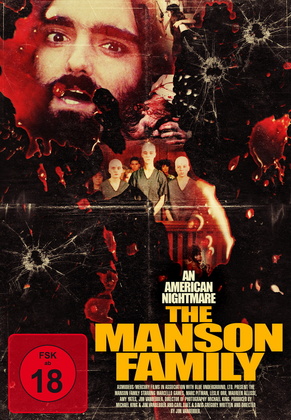The notorious avant-garde filmmaker Kenneth Anger once commented that he “always considered movies evil,” adding that “the day that cinema was invented was a black day for mankind.” Hyperbole aside, Anger’s assessment is undeniably prescient when one considers the staggering impact that the medium has had on the collective consciousness of Western civilization. Contemporary film not only allows us to experience volatile life and death scenarios in a manner that is entirely vicarious, but also manipulates our emotions to empathize with whatever characters are framed as charismatic and “on the side of righteousness,” silently disregarding the extent to which the latter qualifier has become increasingly relative. Jim Van Bebber’s The Manson Family represents a fist-swinging rebellion against the type of deliberately manipulative “training wheels” cinema that has long defined traditional narratives and the thinly-veiled condescension of disposable mainstream distractions.
Indeed, it is perhaps a large part of the bulletproof charm of The Manson Family that the film seems to unapologetically disregard all facets of tradition while simultaneously abandoning any semblance of restraint. Those with their fingers on the pulse of the underground have long been aware of its now legendary production trajectory: the final cut surfaced in 2003, 15 years after Van Bebber initiated production. Having intensely researched the film’s production history myself, it seems that Van Bebber and his disciples actually finished shooting around 1994, at which time the auteur was stuck between a rock and a hard place as distribution and the necessary post-production regimen for the monolith that the film had become eluded him. Whether time truly heals all wounds remains up for debate, but in the case of The Manson Family, Van Bebber’s grueling limbo period of nearly a decade finally lifted when British producers David Gregory and Carl Daft stepped in to deliver the finishing touches, not the least of which is a thundering Dolby 5.1 soundtrack that in itself warrants investing in quality surround sound speakers. “I wanted to create a symphony!” Van Bebber exclaimed, and that he did, with no small contribution by occult metal legend Phil Anselmo (Pantera, Down, Superjoint Ritual).
The finished product is pure firepower, the agonizing years and unwavering dedication that led up to its fruition shimmering through in every frame. Having had the honor to screen and introduce The Manson Family at the Detroit Underground Film Festival in July of 2012, I stand firmly behind my assertion at that time that it represents the epitome of underground. To behold an elaborate work of macabre art that was verifiably fueled only by passion and unshakable perseverance is a powerful boon to anyone that considers himself an initiate to the realm of transgressive art. A veritable fountain of inspiration.
The film is shot in a manner that is at once violently chaotic yet coherent, a balance that many aspiring auteurs consistently fail to achieve. I hesitate to belabor over the myriad plot points as I honestly believe that this is a film that best serves the viewer who approaches it blindly and with faith. With that said, one of Van Bebber’s most prominent creative choices in crafting the narrative was to shift the focus from Charles Manson himself to his giddily deluded “family” members, something which had yet to be done in any of the menagerie of low rent Manson films that had come before. The acting is uniformly prime, especially considering that much of the cast consisted of friends and theatre students at Van Bebber’s alma mater, Wright State University in Ohio.
A subplot weaves in and out of the Manson narrative, depicting nihilistic youth in the mid 90s and utilizing an aesthetic that is clearly influenced by the grimey tableaus of New York filmmaker Richard Kern. These sequences heighten the viewer’s sense of foreboding while doubling down on the explicitly conveyed “death trip” sensation of the proceedings.
To say that the film is grisly would be an understatement, with several scenes bordering on exploitation. However, the subject matter is treated with such seriousness and the footage is presented in such a hyperreal manner that I feel it fits more comfortably under the banner of “arthouse.”
The Manson Family is a rare film in that it provides the viewer with a genuine emotional experience in which dated rulebook structures are abandoned for the sake of a harrowing nightmare in which any form of redemption is off the table. Despite the inevitable whining chorus from politically-correct hack critics, the film is indisputably valid and a literal embodiment of an aesthetic and worldview inherent to the underground which forces the viewer to confront himself and question the utility of film as a medium for communicating dormant but nevertheless real dimensions of the human psyche.

